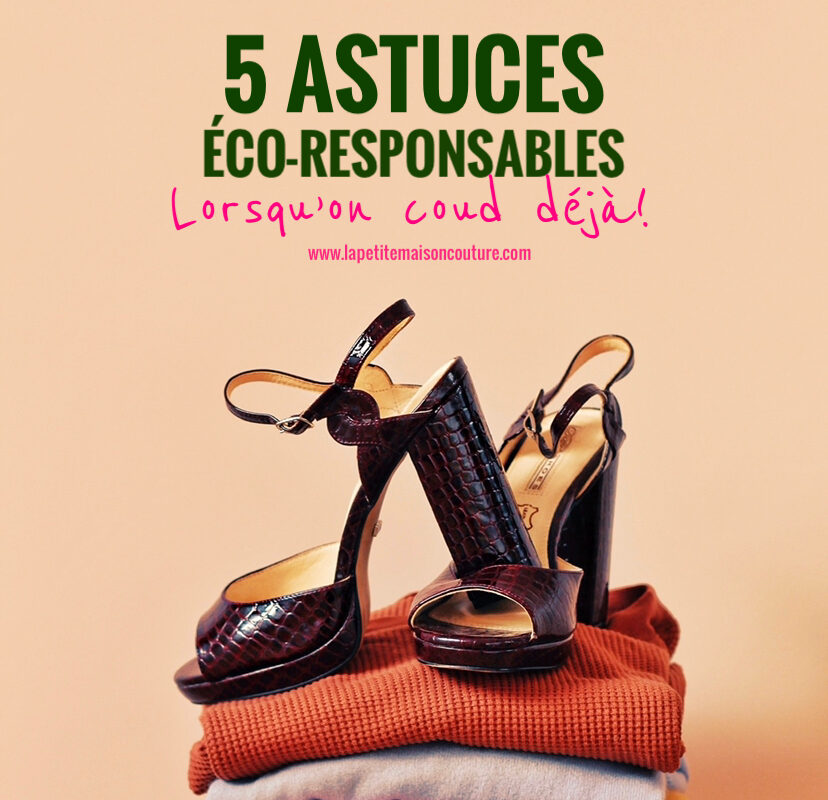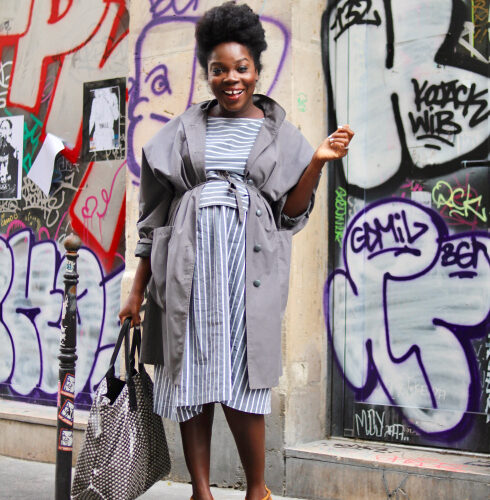5 sustainable tips when you already sew
Who said that sewing our own clothes was 100% sustainable? Should we just be proud of ourselves and leave it there ? Who said that if we sew our own clothes we would solve sustainability issues in the fashion and textile industry. Sewing our own clothes surely is a great step towards a sustainable wardrobe. However this activity is not always a sign of sustainability. I still make mistakes, and I am trying to be better on this: Here are 5 ideas that I put into practice to tend towards a sustainable wardrobe. I am sharing them with you in this article.
1. Mind the composition of the fabric we buy
The more a fabric contains synthetic material such a polyester or nylon, the less biodegradable it will be. Let’s choose natural fabric such as biologic cotton, hemp, linen, bamboo, lyocell, modal, tencel, viscose, linen and cachemire. Please note however that certain fabrics like Lyocell can involve a chemical treatment during its transformation process.
2. Quality over quantity
This point in linked to the one just above. When we own a handmade garment made of quality fabrics and threads, we will tend to wear it for several years or even decades. A garment made of poor quality materials will tend to not last and chances are we will not wear them for a long time. It is this same clothing that will be found years later in landfills located in emerging countries.
3. Be careful to not over buy fabric
I’m sure you know cookie monsters, chocolate monsters… But have you heard of fabric monsters who buy, buy, buy, stock, buy, buy buy (and at this point can’t even stock because there is no more space..). When we buy fabric, let’s take responsibility over what this fabric will become. Let’s ask ourselves these simple questions: Are we really going to use it ? What are we going to make out of it, when will we plan to make it? What will we do if we don’t want that fabric anymore ? Being honest with ourselves in our responses will help us take better decisions.
4. Think about the garment’s next life.
This is all about changing our mindset. When we adopt a mindset that knows that the garment we are creating is meant to have several lives after us, we will pay much more attention to finishing, to quality of materials used such as zips, buttons, threads etc, for the garment to last. We can even add a spare button so that the next owner will be able to easily mend and continue wearing the garment we don’t want/need anymore.
5. One garment: many styling options
Now this tip right here is one that I have been trying lately to put into practice with what I already have. I am realizing that if we are able to create various styling options with one same garment, we will tend to sew less frantically, sew what we need, consume less fabric, wear that same garment frequently and longer. If we wear an attire with one same styling look, chances are that if one item of the style is missing we will tend to no longer wear the garment.
…
I hope you remember at least one of these. As you can see, these tips can apply to your ready to wear clothing as well. Don’t hesitate to share this post, and please don’t leave without sharing your impressions or contributing with your ideas as well.
Take care,







Merci Elaine de toutes ces idées
J’aime beaucoup l’idée de créer plusieurs look je vais essayer de faire ça davantage
Concernant les tissus : bambou viscose tencel et Lyocell (=tencel mais marque déposée)
Ils ont tous un procédé très chimique dans leur production !!! Donc attention quand même !
Merci beaucoup Hélène. Et j’apprends grace à ton commentaire que Lyocell = Tencel. Merci pour cet apport. Effectivement c’est la raison pour laquelle j’indique que certains de ces tissus (ex. lyocell) ont subi des procédés chimiques. Ils restent quand même classés comme tissus d’origine naturelle, c’est la raison pour laquelle je les citent dans cette catégorie tout en soulignant quand même le caractère chimique lié à la transformation que certains d’entre eux subissent.